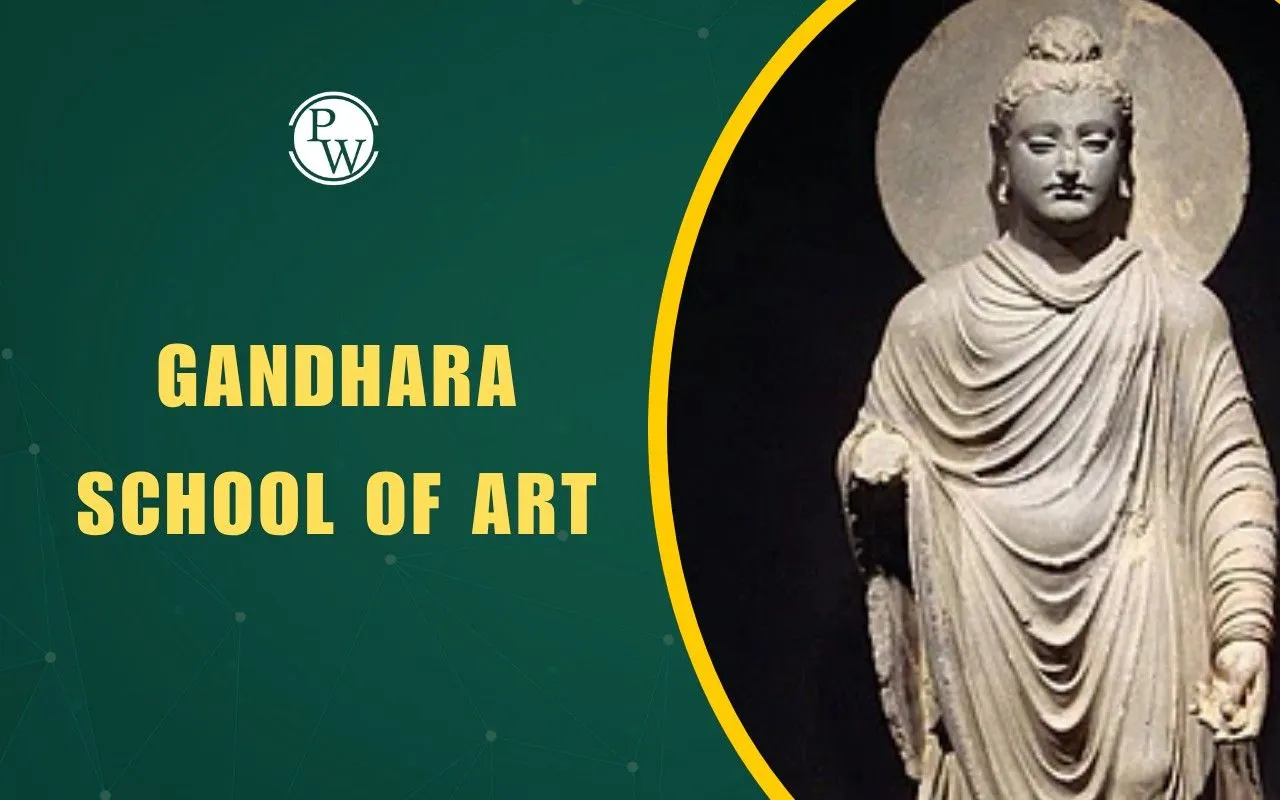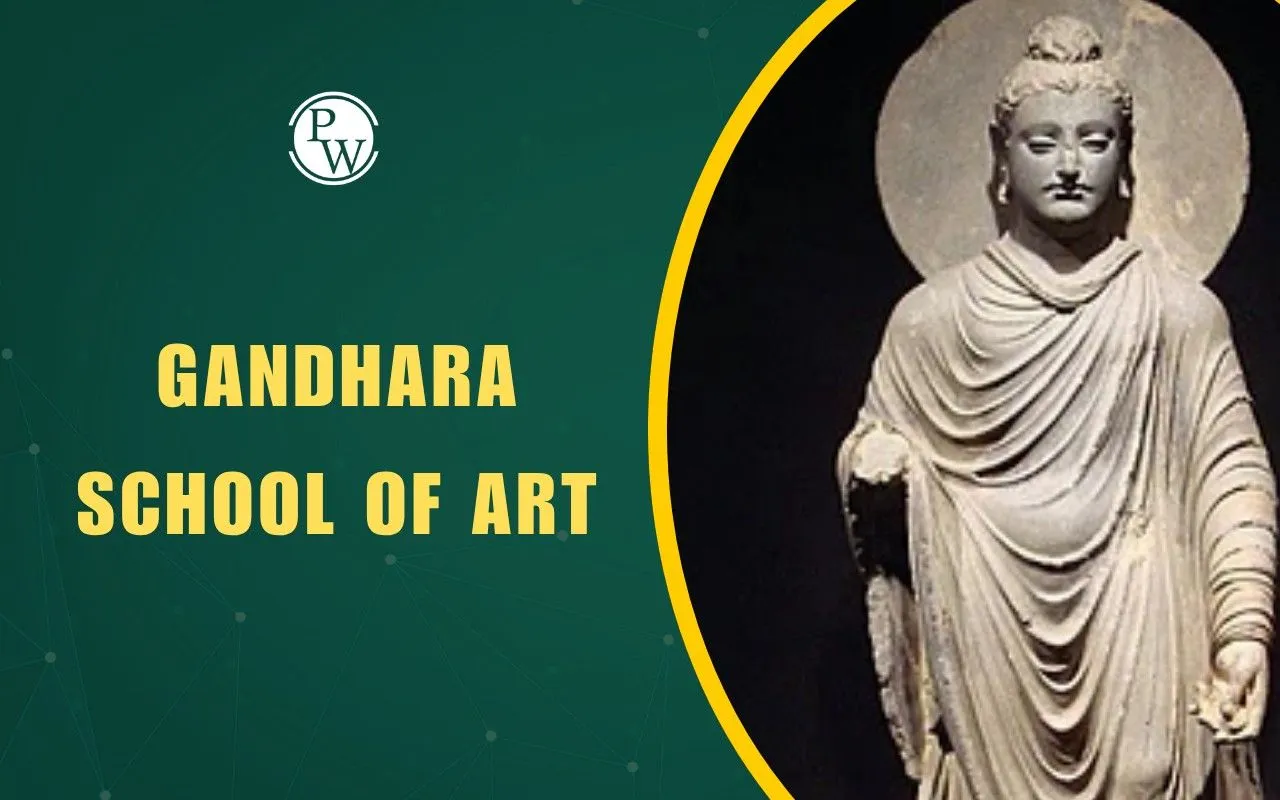

Gandhara School of Art: Art is like a window into history. It tells us about the life, culture, and beliefs of people from the past. One such art tradition is the Gandhara School of Art, which flourished in ancient India. This school is famous for its beautiful sculptures that combine both Indian and Greek styles.
When we look at the statues of the Gandhara School, we see calm faces, flowing robes, and detailed features. These artworks remind us of how cultures meet and create something new. Gandhara art is very important because it shows how Indian traditions combined with foreign ideas to form a unique style.
What is Gandhara School of Art?
Gandhara School of Art was an ancient style of sculpture and architecture. It developed in the north-western region of India, mainly in present-day Afghanistan and Pakistan, during the 1st to 5th centuries CE:
-
Gandhara School of Art grew under the rule of the Kushana dynasty, particularly during the reign of King Kanishka.
-
The region of Gandhara was located along important trade routes, like the Silk Road, which connected India with Central Asia, Greece, and Rome. Therefore, the art of Gandhara demonstrates a strong influence of foreign cultures.
-
The Gandhara School is best known for creating statues of the Buddha. Before this, Indian art mostly showed the Buddha through symbols like the lotus, wheel, or footprint. But Gandhara artists made the first human images of the Buddha.
Historical Background of Gandhara Art
The story of Gandhara art is linked to history. Around 327 BCE, Alexander the Great invaded north-west India. His soldiers and artists brought Greek culture and art into the region. Later, when the Kushanas became powerful, they encouraged the building of monasteries, stupas, and sculptures.
-
Gandhara was primarily a meeting place of different cultures. The art there was very different from traditional Indian art. It blended Greek, Roman, Persian, and Indian styles. This mixture is called Indo-Greek art.
-
The most active period of Gandhara art was from the 1st to the 4th century CE, when Buddhist monks and traders spread the religion across Asia.
-
The statues made in Gandhara were carried to places like China, Japan, and Tibet. This helped in spreading Buddhism around the world.
Features of Gandhara School of Art
The Gandhara School has some unique features that make it easy to recognize. These features make Gandhara art a special mix of Indian spirituality and Greek craftsmanship. Some of the important features of the Gandhara School of Art is as follows:
-
Greek Influence: The statues look similar to Greek gods, with curly hair, long noses, and detailed robes.
-
Buddha in Human Form: The Buddha is shown as a calm and kind man, sitting or standing with gentle expressions.
-
Detailed Drapery: The robes are shown with many folds, just like Greek and Roman dresses.
-
Realistic Expressions: The faces of the figures look very natural and lifelike.
-
Use of Stone: Most statues were carved from grey sandstone or schist.
-
Halo Around Head: Many Buddha statues have a circular halo behind the head, showing spiritual power.
-
Scenes from Buddha’s Life: Relief panels show important events like the birth of Buddha, his meditation, and his first sermon.
Important Centres of Gandhara School of Art
Gandhara Art flourished in the north-west part of India, particularly in the present-day Afghanistan and Pakistan. These centers had monasteries, stupas, and schools where artists worked and taught. Some of the important centres of the Gandhara School of Art were:
-
Taxila (in present-day Pakistan)
-
Peshawar
-
Bamiyan (in Afghanistan, famous for the giant Buddha statues later destroyed in modern times)
-
Swat Valley
Difference Between Gandhara and Mathura School of Art
Mathura School of Art developed in the Mathura region of Uttar Pradesh around the same time as Gandhara. But the style and focus of both schools were very different. Both schools are important because they represent different cultural directions in Indian art. The difference between the two schools of art is provided in the table below:
| Difference Between Gandhara and Mathura School of Art | ||
| Features | Gandhara School | Mathura School |
| Location | North-west India (Afghanistan & Pakistan) | North India (Uttar Pradesh) |
| Time Period | 1st–5th century CE | 1st–6th century CE |
| Material Used | Grey sandstone, schist | Red sandstone |
| Influence | Strong Greek and Roman influence | Purely Indian traditions |
| Depiction of Buddha | Buddha is shown with curly hair, a robe with folds, and sharp features | Buddha is shown with broad shoulders, a round face, and a simple robe |
| Style | Realistic and natural | Symbolic and spiritual |
| Other Figures | Bodhisattvas, Yakshas, protective spirits | Hindu gods, Jain Tirthankaras, Yakshis |
Interesting Facts about Gandhara Art
Gandhara School of Art flourished in the Indian subcontinent during the 1st to 5th century CE. There are several interesting facts related to this style of art. Some of them include the following:
-
The Bamiyan Buddhas in Afghanistan, which stood 175 feet tall, were inspired by the Gandhara style.
-
The halo behind Buddha’s head, later common in Indian and Christian art, began in Gandhara.
-
The Gandhara artists often made Bodhisattva statues, which look like princes wearing jewelry and turbans.
-
Gandhara art shows that even 2000 years ago, India was connected with Europe through trade and culture.
